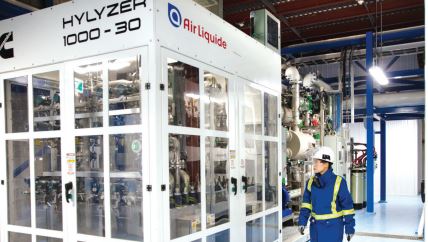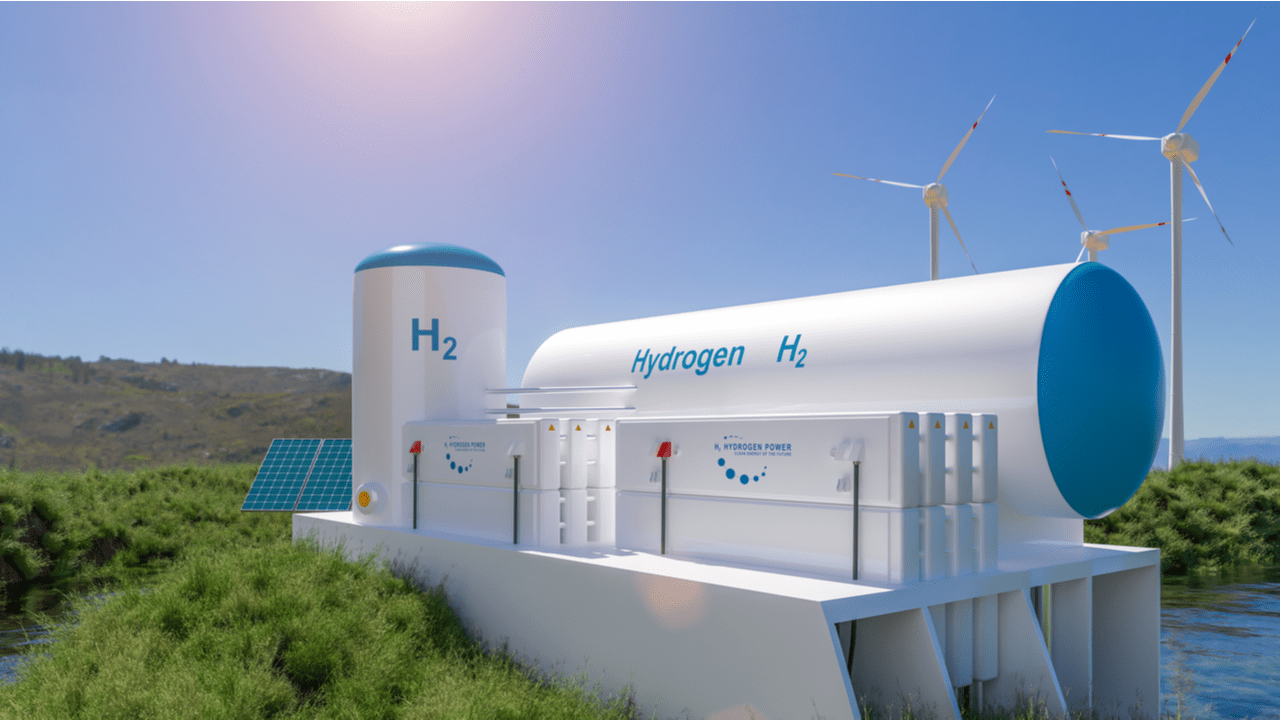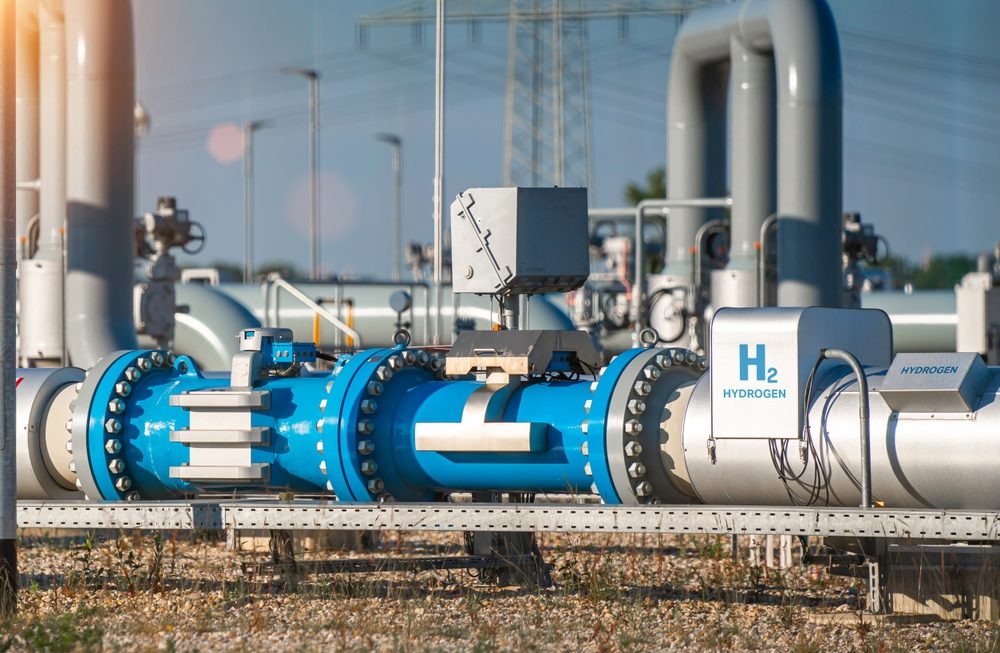Special thanks to David Edwards (Director and Advocate for Hydrogen Energy, Air Liquide US), David Burns (Vice-President of Clean Energy Development, Linde), and Lars Martiny (Head of Hydrogen Future, The Chemours company). The content for this blog was published in the March 2022 US Print edition of GasWorld.
When considering which segments of the industrial gas industry have taken off over the past 5-10 years, hydrogen invariably dominates the conversation. Arguably one of the fastest growing segments, the hydrogen business is forecasted to expand 2-to 5-fold by 2035. Currently, most of the global consumption today is for refining petroleum, treating metals, producing fertiliser, and processing foods. However, the wheels are already in motion for hydrogen’s profile and market potential to change dramatically – driven by the increasing focus on sustainability of operations, product portfolios, and ultimately the environment.
Moreover, these dynamics have hydrogen expanding into industries such as transportation, power/energy and several industry-specific applications that use limited-to-no hydrogen today. As you would expect, this growth is attracting an influx of both ‘new’ and ‘non-traditional’ players into this space, bringing a variety of new competencies, technology solutions, and even business models to this market. This article explores these shifts in the business of hydrogen, starting with humble beginnings in the past through to the future expectations.
The Past
British scientist Henry Cavendish is credited with discovering hydrogen gas in 1766, the result of him reacting zinc metal with hydrochloric acid. A few decades later, English scientists Nicholson and Carlisle discovered that applying electricity to water produced hydrogen and oxygen gases, thus establishing the forerunner of modern-day electrolysis. In addition to these centuries’ old discoveries, there are more recent past milestones that enrich hydrogen’s history. In the early 1900s, military organisations saw the potential of hydrogen as a lifting gas and was used for a variety of military activities. During World War I, Germany and others employed Zeppelins for reconnaissance and for strategic bombing raids. However, due to safety concerns (flammability) and the development of the aircraft industry, hydrogen’s use gradually diminished. Still, the potential of hydrogen was clear, additional applications were explored, and its use quickly shifted to a fuel or propellant for aircraft. All US military branches explored its use and those efforts eventually led to the use of liquid hydrogen in the US space programme.
Around the same time, other industrial uses for hydrogen were being explored and developed. Companies such as BASF, ICI and Johnson Mathey were instrumental in developing steam methane reforming which was first demonstrated on an industrial scale in 1936 and quickly became the technology of choice in the chemical, oil, and gas sectors for the industrial production of hydrogen, methanol, and ammonia. Fast forward to the 1970s, countries started to seriously look at fuel conservation and reducing their environmental impact as a result of the oil embargo. Clean air legislation was established which called for the first tailpipe emissions standards in vehicles and impacted the fuel specs used in those vehicles. This tightening of emission regulations resulted in increased use of hydrogen for hydroprocessing of fuels to hydrogenate sulfur and nitrogen contaminants and to finally remove them as hydrogen sulfide and ammonia.
Around the same time there was rising international focus on the environment. The United Nations (UN) convened its first panel on Climate Change in 1989, followed by the first Earth Summit in 1992. Then in 1997, the first UN conference was held, which attempted to secure legally binding emissions reductions from countries around the world. It then took 18 years and multiple UN ‘COP’ meetings to establish the Paris Climate Accord (PCA), which brought things together in 2015. The signing of the PCA was a watershed event because it was the impetus that moved several countries forward to establish formal strategies supporting their PCA commitments. One of the key components of these strategies was an established ‘hydrogen strategy’ containing spending, infrastructure, and end market targets. With Japan being credited as developing the first formal hydrogen strategy, many countries started to follow suit, which continues to this day.
The Present
In late 2021, COP26 grabbed worldwide headlines continuing to elevate climate change challenges and bringing greater attention to the need for accelerated climate action to keep up with climate change impacts the world was experiencing. As a result, during the conference, regions, countries, and companies made commitments to further cut emissions within this decade – the objective being to keep the world on track to meeting its 2050 Net Zero targets.
With that as a backdrop, hydrogen’s role in assisting the achievement of Net Zero targets continues to become clearer to governments, industry sectors, and consumers. Its primary role is that of a cost-efficient decarbonisation solution across many sectors. However, it is not the only answer. Typically, hydrogen is being targeted in areas that cannot be done more simply, cheaply, or efficiently by the direct use of clean electricity and batteries. With that said, there are still several hydrogen market opportunities including a variety of feedstock uses (ammonia synthesis for fertiliser production and iron reduction for steel), fuel for transportation (especially for heavy duty vehicles, rail, maritime and aviation), residential/industrial building heating, and power applications such as seasonal balancing and back-up generators. Consequently, activity levels in the hydrogen space are growing dramatically.
The new energy applications of hydrogen have the opportunity to build off of more than a half century of industrial user development. The resulting collaborations across representatives of energy, production, and transportation sectors is setting the stage for the future growth of this market.
David Edwards, Director and Advocate for Hydrogen Energy, Air Liquide US
As of January 2022, there were 92 countries representing 78% of global emissions who have made sincere Net-zero carbon commitments, and over 35 have formal hydrogen strategies. These countries’ also set goals for significant renewable hydrogen investment and established public/private partnerships to help drive and support the efforts. The early movers have been Japan, South Korea, and the EU (and many of its member countries), all with the goal of achieving PCA climate targets while at the same time reducing or eliminating dependence on imported fossil fuels.
These country-specific hydrogen strategies have fueled the recent uptick in hydrogen-related projects. A McKinsey study for the Hydrogen Council in November 2021 documented over 500 projects with $160bn in funding allocated to them. Despite the strong and growing project database, a significant investment gap still remains if 2030 goals are to be achieved and remain on-track for 2050 Net-Zero targets. Multiple studies indicate we are about 20-25% of the way there, with significant gaps in all areas of the hydrogen value chain. These gaps paint a clear picture – we are behind schedule.
Being even more granular and specific to our industry, each of the tier one players has signed multiple agreements and are executing projects with provincial governments, cities, and companies around the world, partnering to help them design and build hydrogen capabilities in those local markets .
We’re convinced that hydrogen will play a key role in the new energy ecosystem, but there is a long path ahead of us. We are actively contributing to the transition through the development of partnerships with other key industry players and by making concrete investments across the new value chain to enable the growth of the clean hydrogen economy.
David Burns, Vice-President of Clean Energy Development, Linde
The oil and gas industry has arguably become the most watched industry during the initial stages of this energy transition. Nearly two years ago, the European oil and gas majors became the first to set Net Zero 2050 emissions targets, start diversifying away from oil and gas, make significant investments in renewables – that is, solar and wind power – and develop plans to invest along the low-carbon value chain inclusive of hydrogen. This past year (2021) has been the year the US oil and gas majors finally followed suit, partly due to pressure from their shareholders. As a result, it has now become clear that the oil and gas industry is now accelerating their pivot toward the low-carbon energy space. To be clear, oil and gas revenues for this industry will continue to dominate earnings and cash flow through at least 2030. However, the share of CAPEX going toward renewables, carbon capture and storage (CCS) and blue/green hydrogen doubled during 2021 and is expected to be in the 20-25% range going forward for all the majors.
Simply put, we cannot achieve a full-scale hydrogen economy in a silo. There will be no singular hero in this effort. It will take collaboration and cooperation from every possible sector you can think of – science and technology, manufacturing, business, private funders, public policy makers and so on. This is why Chemours currently leads or participates in several Department of Energy (DOE) projects and is involved in several projects within the EU. It is also why we balance our focus on community initiatives based in hydrogen valleys or hubs, for instance, with global involvement. As they say, you have to walk before you can run – customer by customer, community by community Chemours works to build the acceptance of hydrogen solutions that will form the foundation of global transition.
Lars Martiny, Head of Hydrogen Future, The Chemours company.

The Future
One thing that is clear is that hydrogen’s future shows a lot of potential; however, there are specific challenges that need to be addressed along the way to ensure its success. As a result, the key topics dominating the dialogue of hydrogen’s future are the 2030 global forecast and assumptions, critical success factors (CSF) necessary to drive growth, and key challenges to overcome during this journey.
The forecast for hydrogen (incorporating forecasts from IEA, Hydrogen Council, Wood MacKenzie and others) grows from approximately 90 million tons (MT) in 2020, with 60-80% produced from fossil fuels, to 140-200 MT with 70-80% produced using low-carbon technologies by 2030. Reaching these goals, however, will require that installed electrolyser capacity will increase from 0.3 Gigawatts (GW) in 2020 to between 400-850 GW by 2030. The variability in the 2030 numbers is primarily due to the assumptions made by the various studies in the split between electrolysis-produced hydrogen (green) and fossil fuel with CCS-produced hydrogen (blue).
In addition, these growth rates assume significantly declining costs for producing renewable hydrogen, availability of hydrogen where it is needed, and development of cost-effective solutions for hard-to-abate sectors.
There are a lot of forecasts about how big the market is going to be, but what we can all agree on is that it is going to be significantly greater than it is today. Industrial gases companies like us will play a key role in achieving that growth.
David Burns, Vice-President of Clean Energy Development, Linde
To achieve these aggressive milestones, there are a few key CSFs. The first one is the presence of a clear strategy to facilitate the clean energy transition at the country/region level. The strategy should clearly translate those ambitions into concrete policy frameworks, establish collaboration with public/private entities on targets and the roadmap, and formalise plans to best execute that strategy. It is no surprise that the total cost reduction of renewable hydrogen encompassing production, distribution, and dispensing is the second CSF. Due to anticipated cost reductions in renewable power and scaling/improvements in electrolyser technology, the production cost of renewable hydrogen is forecast to drop by >50% by the middle of this decade. The technology/cost for dispensing hydrogen via fuelling stations is also forecasting significant cost reduction, due to continued and innovative improvements, as well as contributions from a number of ‘new and non-traditional’ players coming into this space.
A successful future with hydrogen energy will draw upon its inherent flexibility. Policies and programmes that allow for a broad use of both production methods and usage will ensure that hydrogen can be optimised for the local energy ecosystem while enabling the long-term environmental, energy, economic, and societal goals,
David Edwards, Director and Advocate for Hydrogen Energy, Air Liquide US
However, arguably the component facing the biggest challenge is the ‘distribution, logistics and storage’ component. Most hydrogen strategies include the construction of ‘hydrogen valleys or hubs’ where the core hydrogen production occurs and serves a concentrated group of commercial/retail customers. The investment costs are significant and expected to be constructed by the primary hydrogen producers and other developers with some level of subsidy from local/regional governments. This price tag will necessitate that the build-out be synchronised with market development and funding availability. On the positive side, the industrial gas majors are familiar with this model and will be instrumental in demonstrating these capabilities in multiple regions around the world.
A successful future with hydrogen energy will draw upon its inherent flexibility. Policies and programmes that allow for a broad use of both production methods and usage will ensure that hydrogen can be optimised for the local energy ecosystem while enabling the long-term environmental, energy, economic, and societal goals,
David Edwards, Director and Advocate for Hydrogen Energy, Air Liquide US
Probably the most important CSF, and the one with the biggest risk, is the growth and uptake of the renewable hydrogen market. As a chemical feedstock, hydrogen is irreplaceable, and it is just a matter of blue/green hydrogen costs being competitive with current fossil fuel-based hydrogen technology. However, sectors that do not currently use hydrogen will not change technology just because it is green. Hydrogen is going to have to win use-case by use-case, and it will not be easy. Not only does it have to beat the incumbent technology, but it also must beat every other zero-carbon option for that use-case.
The importance of the scaling of the supply chains cannot be underestimated when we talk about fully developing the potential of hydrogen across all industries. Take mobility as just one example – it’s not enough to have the technology ready to be put to use. It has to be accessible and affordable to the masses, and that takes commitment from everyone involved. Whether it is fuel cell technology, electrolysis or more, Chemours is committed to continuing the work we started more than 50 years ago and to harnessing the power of chemistry to improve the lives of people today and create a sustainable planet for the generations of tomorrow.
Lars Martiny, Head of Hydrogen Future, The Chemours company.




